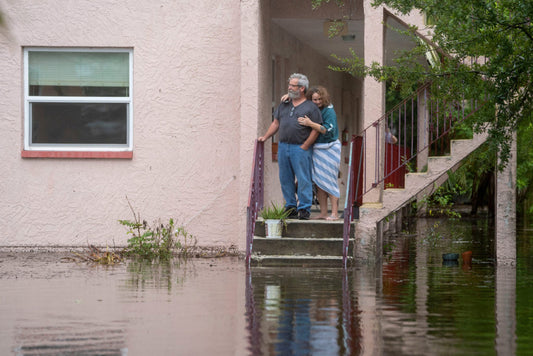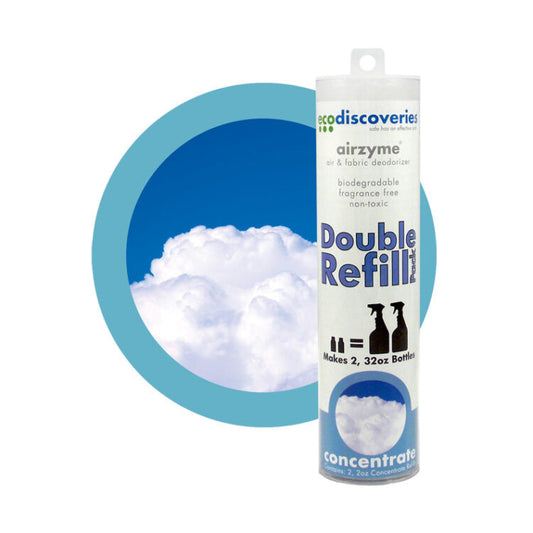When it comes to cleaning your home, there’s no need to opt for what WebMD calls “weapons of mass disinfection“. Harsh cleaning products are more prevalent than their non-toxic alternatives – yet they’re no more effective.
As people have become more concerned with checking ingredients labels, home cleaning brands have responded by positioning themselves or a subset of their products as eco-friendly. But what should you look for in checking if a cleaning product is as “clean” as it claims?
Here’s a 12-point checklist to help you choose greener cleaning products.
1. NON-TOXIC
“Non-toxic” is a catch-all term that implies a product will not cause immediate or long-term adverse health effects. Though it’s important to choose non-toxic products, this certification alone is not enough. GreenerChoices.org points out the potential for misleading consumers with a “non-toxic” label: “There is no definition or standard used for judging whether a consumer product or its ingredients are “non-toxic”, and no assurance that such a claim has been independently verified.”
2. FRAGRANCE-FREE
Fragrances are everywhere – from perfumes to cleaning products and cosmetics. Consumers are wising up to the potential harmful effects of these smelly substances: ranging from headaches to respiratory conditions and allergies.
3. HYPOALLERGENIC
“Hypoallergenic” means that a product does not produce allergies. That being said, no product can be said to be 100% hypoallergenic in that “somebody, somewhere will have a reaction”. What this claim really means is that the company took care in formulating a product in such a way that minimizes the chances of allergic reactions.
4. CHLORINE-FREE
This claim means a product does not contain chlorine bleach. This substance was long-touted as the king of disinfection and whitening, and is still ubiquitous in the cleaning products aisle. Chlorine bleach has been found to be dangerous to human skin and make a negative impact on the environment.
5. PETROLEUM-FREE
Petroleum-based products belong in your car, not in your home and on your body! Unfortunately, petroleum is found everywhere – from deodorant to hair gel and home cleaning products. Petroleum and it’s byproducts contain a long list of potentially carcinogenic ingredients. In terms of short-term effects, petroleum cannot be absorbed by the skin, so the substance clogs and traps toxins in your pores.
6. GLYCOL-FREE
Some say propylene glycol is safe in small quantities, but studies have shown that consumption of this substance in large quantities can cause damage to the liver, heart, and central nervous system. It is used to give a softer consistency to products like deodorant, cleaning products, and even processed foods.
7. PHOSPHATE-FREE
Phosphates have traditionally been one of the primary ingredients in detergents, used to increase their cleaning efficiency. In recent years, their cleaning abilities have been overshadowed by their negative impacts to the environment. These substances pollute our natural water sources, making them unsuitable for human consumption and for supporting animal life.
8. AMMONIA-FREE
Most glass and window cleaners contain this poisonous and corrosive chemical, also very common in hair dyes. Ammonia has been shown to irritate the skin, eyes and respiratory system.
9. CAUSTIC-FREE
“Caustic-free” means a product is free of any caustic agents, such as sodium hydroxide. Common in soap, this substance is known to be corrosive to organic tissue and should be avoided at all costs.
10. DYE-FREE
There are a spectrum of adverse health effects associated with different artificial colorings added to consumer products. For example, Blue 1 has been shown to cause allergic reactions and Red 3 has been banned from cosmetics due to potentially carcinogenic properties.
11. BIODEGRADABLE
By it’s official definition, a biodegradable product can be broken down quickly and naturally with no harm to the environment. This definition is quite broad in that all products will eventually be broken down and returned to nature – whether this takes 20 days or 500 years. Look for terms like “Readily Biodegradable”, which means the ingredients in a product take less than 28 days to break down.
12. NO ANIMAL TESTING
Last but not least, make sure no innocent animals were harmed in the making of your cleaning products. Buying cruelty-free makes sense for more than just empathetic reasons: these days we have humane testing technologies that are actually more effective than employing our furry friends for the job!
HAPPY SHOPPING!
Copy this list and refer to it when choosing which cleaning products to buy for your home. At EcoDiscoveries, we take our commitment to passing this checklist very seriously. For more information about the safety of our products and any questions you might have about buying clean cleaning products, refer to our FAQ page.




